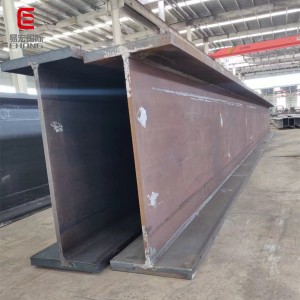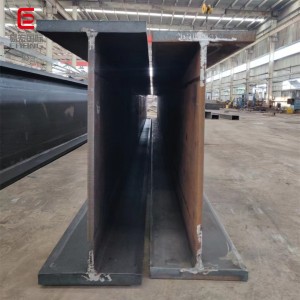H-beam is a kind of long steel with H-shaped cross-section, which is named because its structural shape is similar to the English letter “H”. It has high strength and good mechanical properties, and is widely used in construction, bridge, machinery manufacturing and other fields.
Chinese National Standard (GB)
H-beams in China are mainly produced and categorized based on Hot Rolled H-beams and Sectional T-beams (GB/T 11263-2017). Depending on the flange width, it can be categorized into wide-flange H-beam (HW), medium-flange H-beam (HM) and narrow-flange H-beam (HN). For example, HW100×100 represents wide flange H-beam with flange width of 100mm and height of 100mm; HM200×150 represents medium flange H-beam with flange width of 200mm and height of 150mm. In addition, there are cold-formed thin-walled steel and other special types of H-beams.
European Standards (EN)
H-beams in Europe follow a series of European standards, such as EN 10034 and EN 10025, which detail the dimensional specifications, material requirements, mechanical properties, surface quality and inspection rules for H-beams. Common European standard H-beams include the HEA, HEB and HEM series; the HEA series is typically used to withstand axial and vertical forces, such as in high-rise buildings; the HEB series is suitable for small to medium-sized structures; and the HEM series is suited to applications that require a lighter weight design due to its smaller height and weight. Each series is available in a variety of different sizes.
HEA Series: HEA100, HEA120, HEA140, HEA160, HEA180, HEA200, etc.
HEB Series: HEB100, HEB120, HEB140, HEB160, HEB180, HEB200, etc.
HEM Series: HEM100, HEM120, HEM140, HEM160, HEM180, HEM200, etc.
American Standard H beam(ASTM/AISC)
The American Society for Testing and Materials (ASTM) has developed detailed standards for H-beams, such as ASTM A6/A6M. American Standard H-beam models are usually expressed in Wx or WXxxy format, e.g., W8 x 24, where “8” refers to the flange width in inches and “24 “ denotes the weight per foot of length (pounds). In addition, there are W8 x 18, W10 x 33, W12 x 50, etc. Common strength grades are ASTM A36, A572, etc.
British Standard (BS)
H-beams under the British Standard follow specifications such as BS 4-1:2005+A2:2013. The types include HEA, HEB, HEM, HN and many others, with the HN series placing particular emphasis on the ability to withstand horizontal and vertical forces. Each model number is followed by a number to indicate specific size parameters, e.g. HN200 x 100 indicates a model with a specific height and width.
Japanese Industrial Standard (JIS)
The Japanese Industrial Standard (JIS) for H-beams mainly refers to the JIS G 3192 standard, which contains several grades such as SS400, SM490, etc. SS400 is a general structural steel suitable for general construction works, while SM490 provides higher tensile strength and is suitable for heavy-duty applications. Types are expressed in a similar way as in China, e.g. H200×200, H300×300, etc. Dimensions such as height and flange width are indicated.
German Industrial Standards (DIN)
The production of H-beams in Germany is based on standards such as DIN 1025, for example the IPBL series. These standards ensure the quality and consistency of products and are suitable for a wide range of industrial applications.
Australia
Standards: AS/NZS 1594 etc.
Models: e.g. 100UC14.8, 150UB14, 150UB18, 150UC23.4, etc.
To summarize, although the standards and types of H-beams vary from country to country and region to region, they share the common goal of ensuring product quality and meeting diverse engineering needs. In practice, when choosing the right H-beam, it is necessary to consider the specific requirements of the project, environmental conditions and budgetary constraints, as well as to comply with local building codes and standards. The safety, durability and economy of buildings can be effectively enhanced through the rational selection and use of H-beams.
Post time: Feb-04-2025








